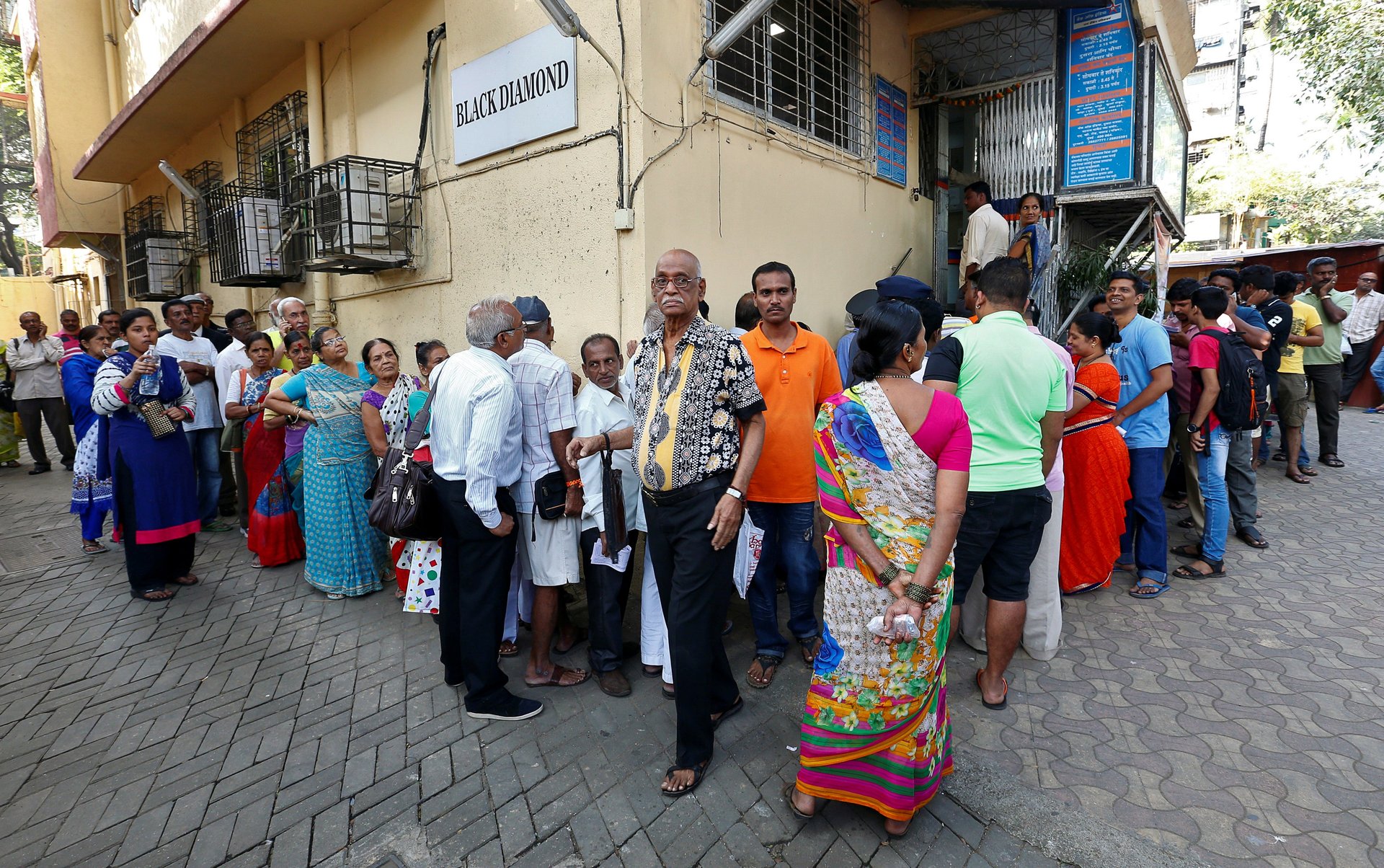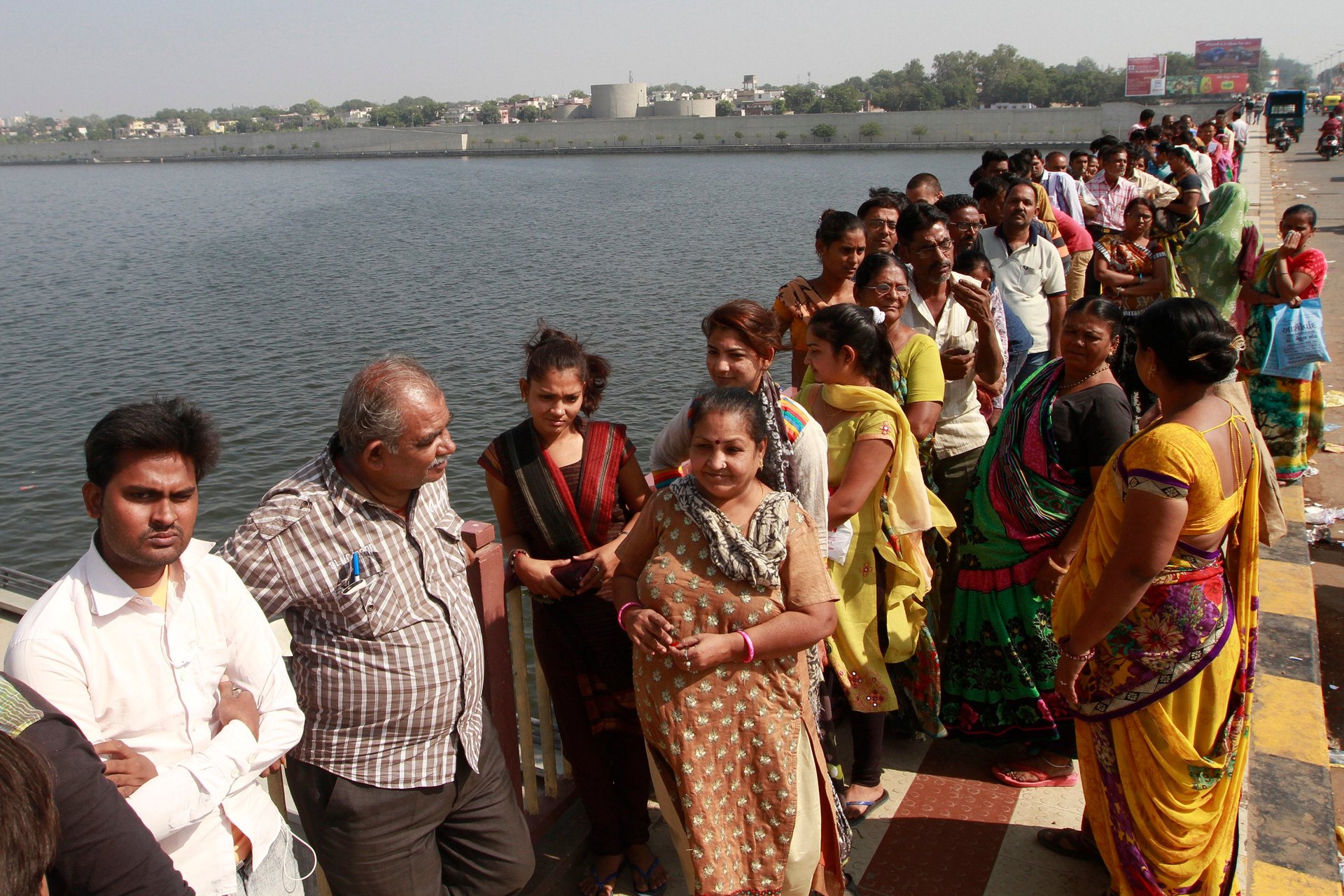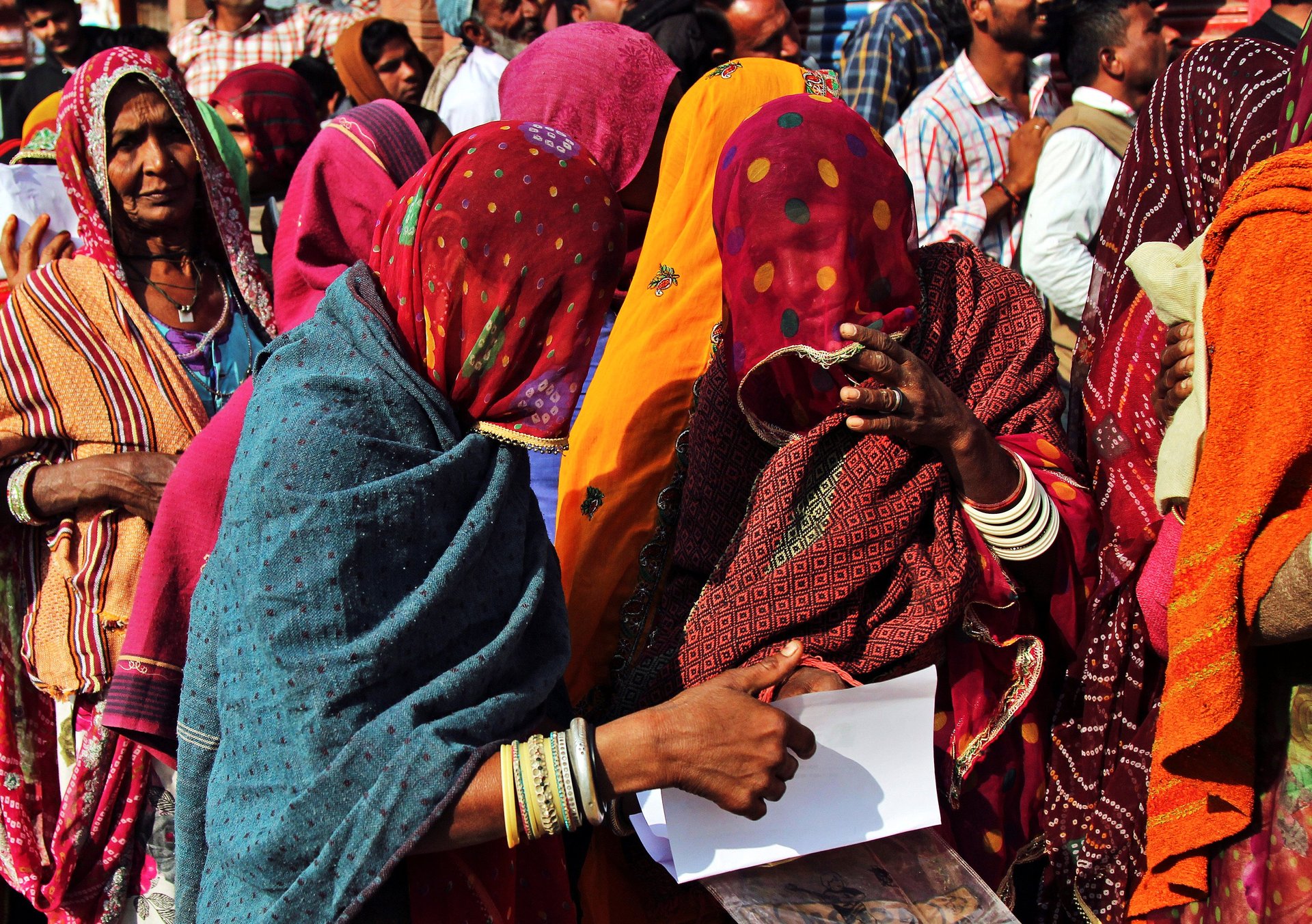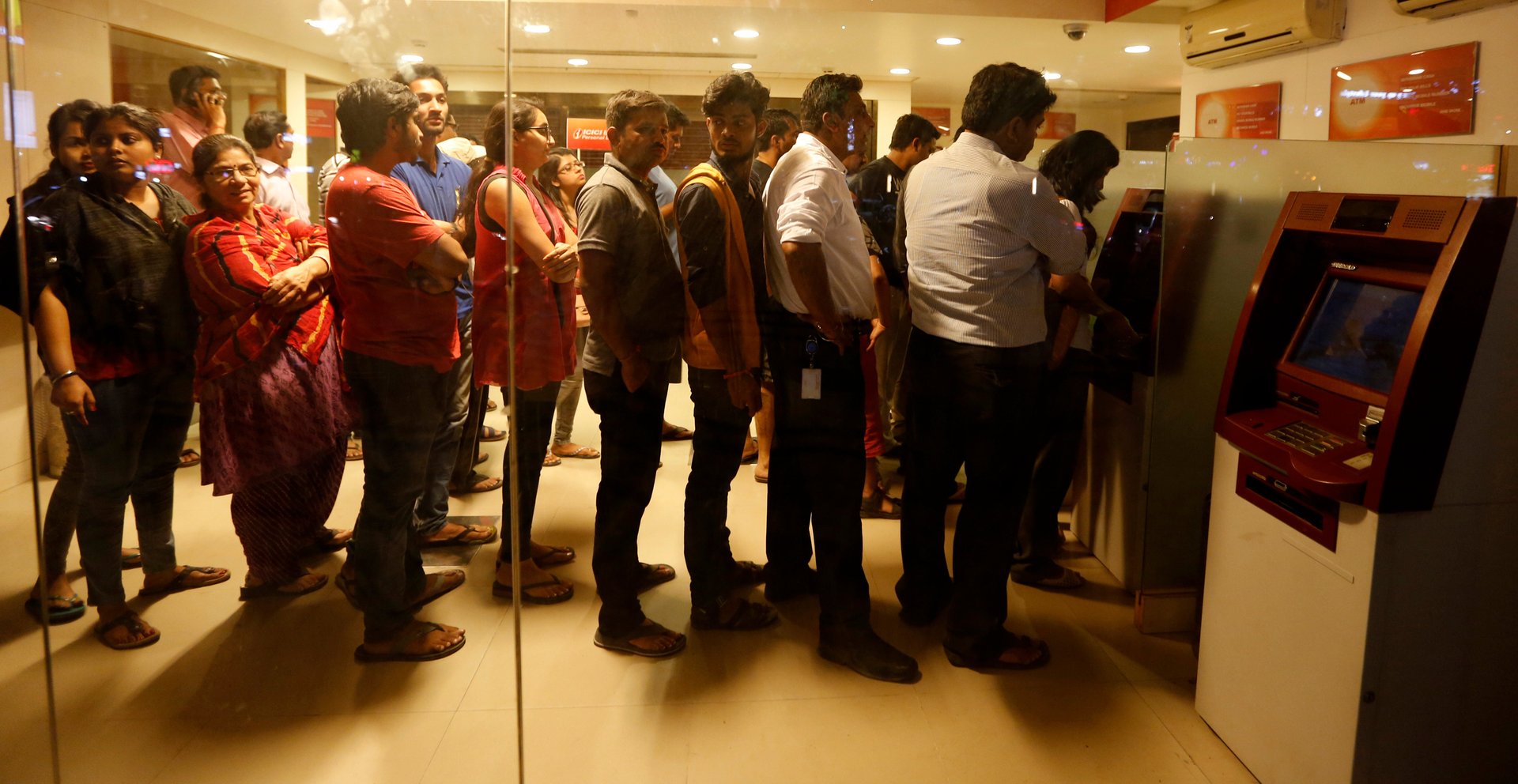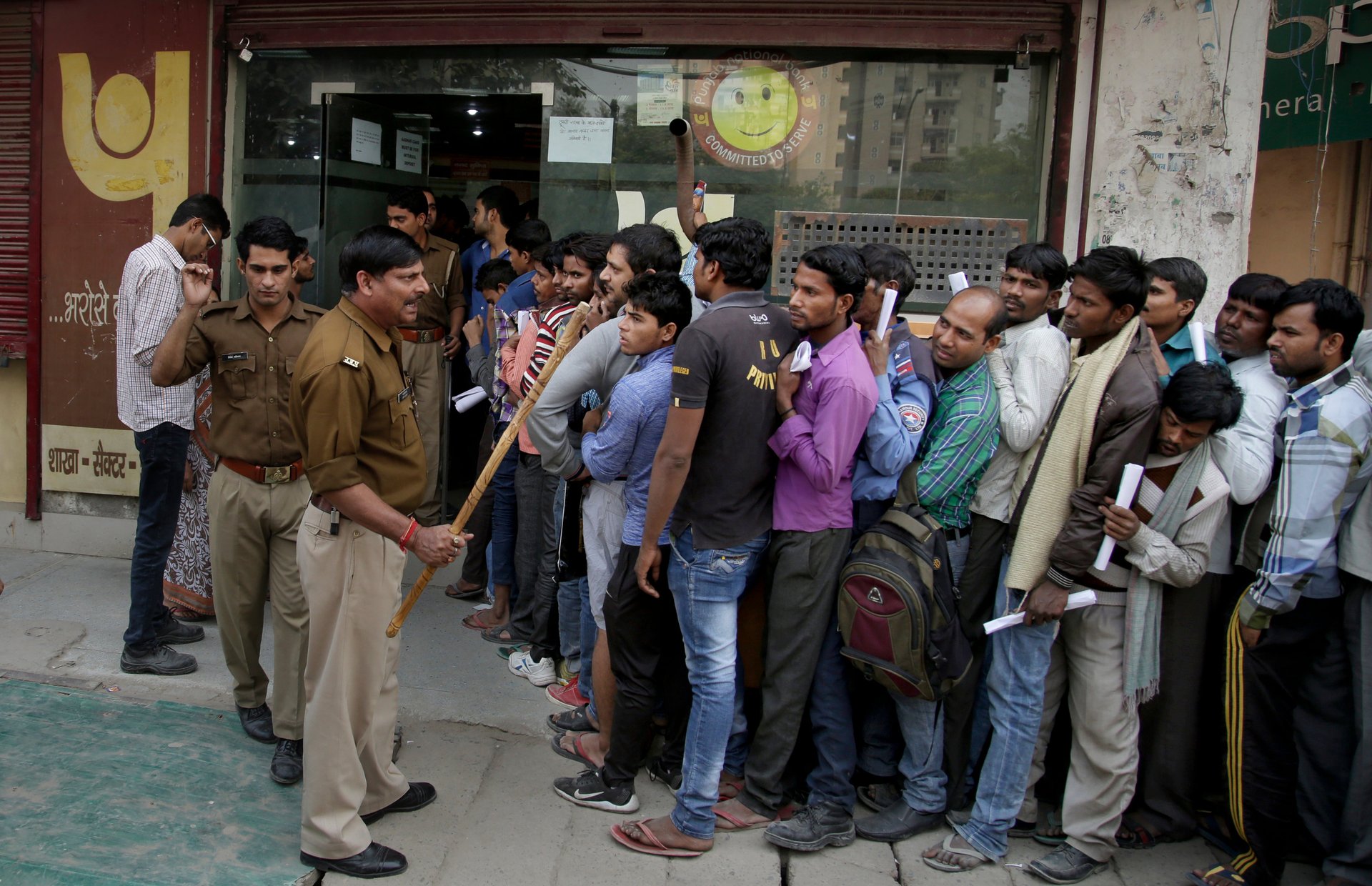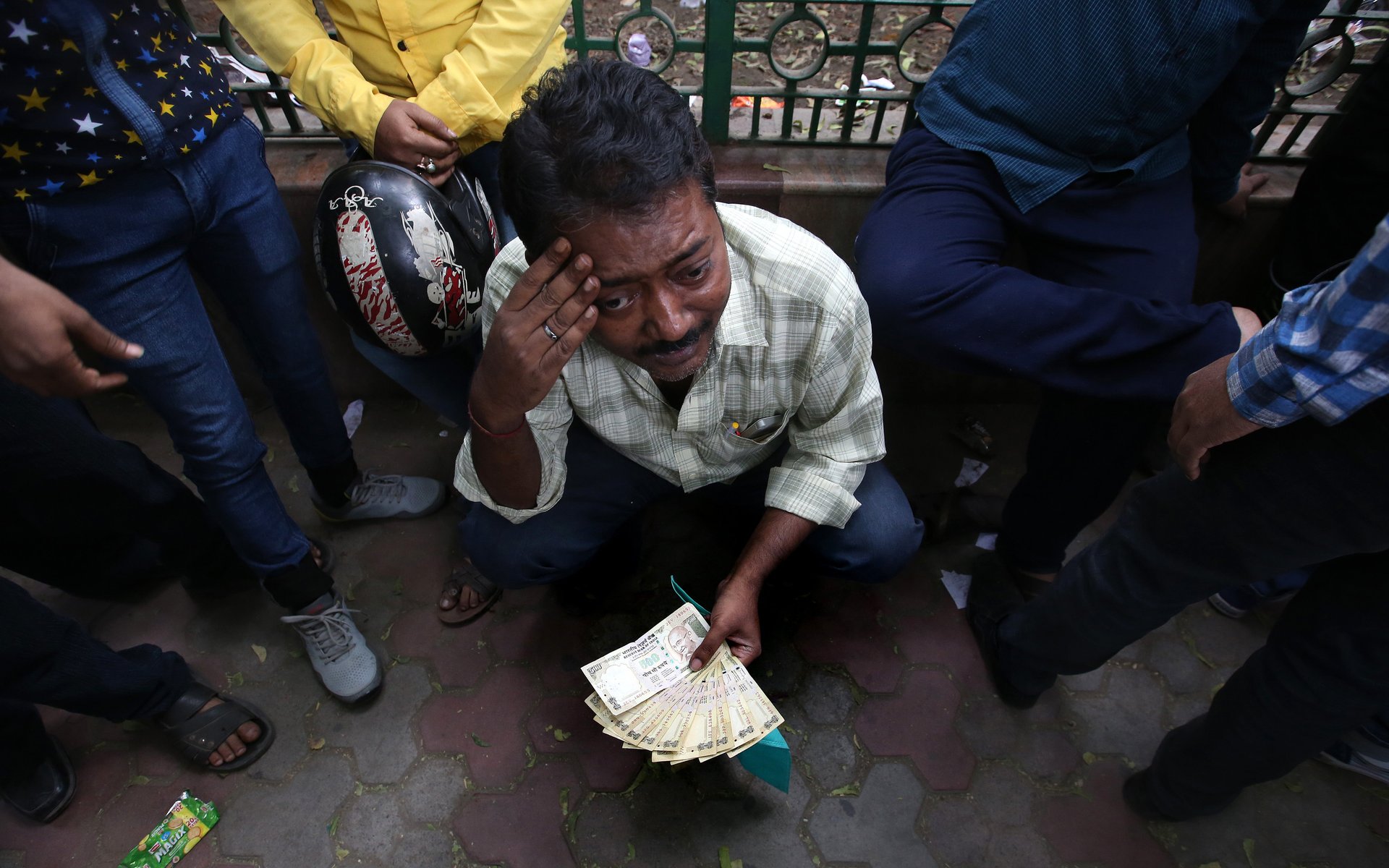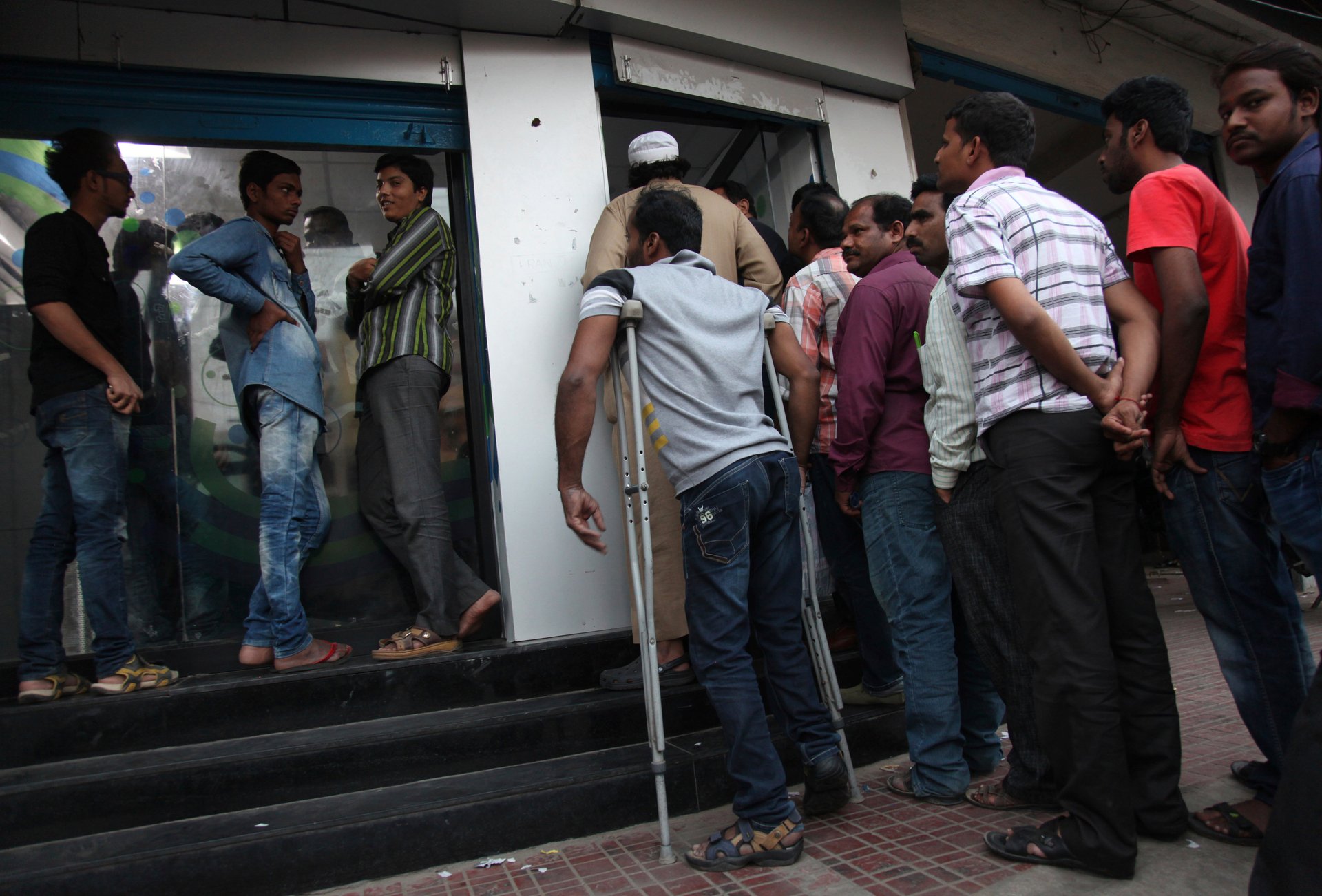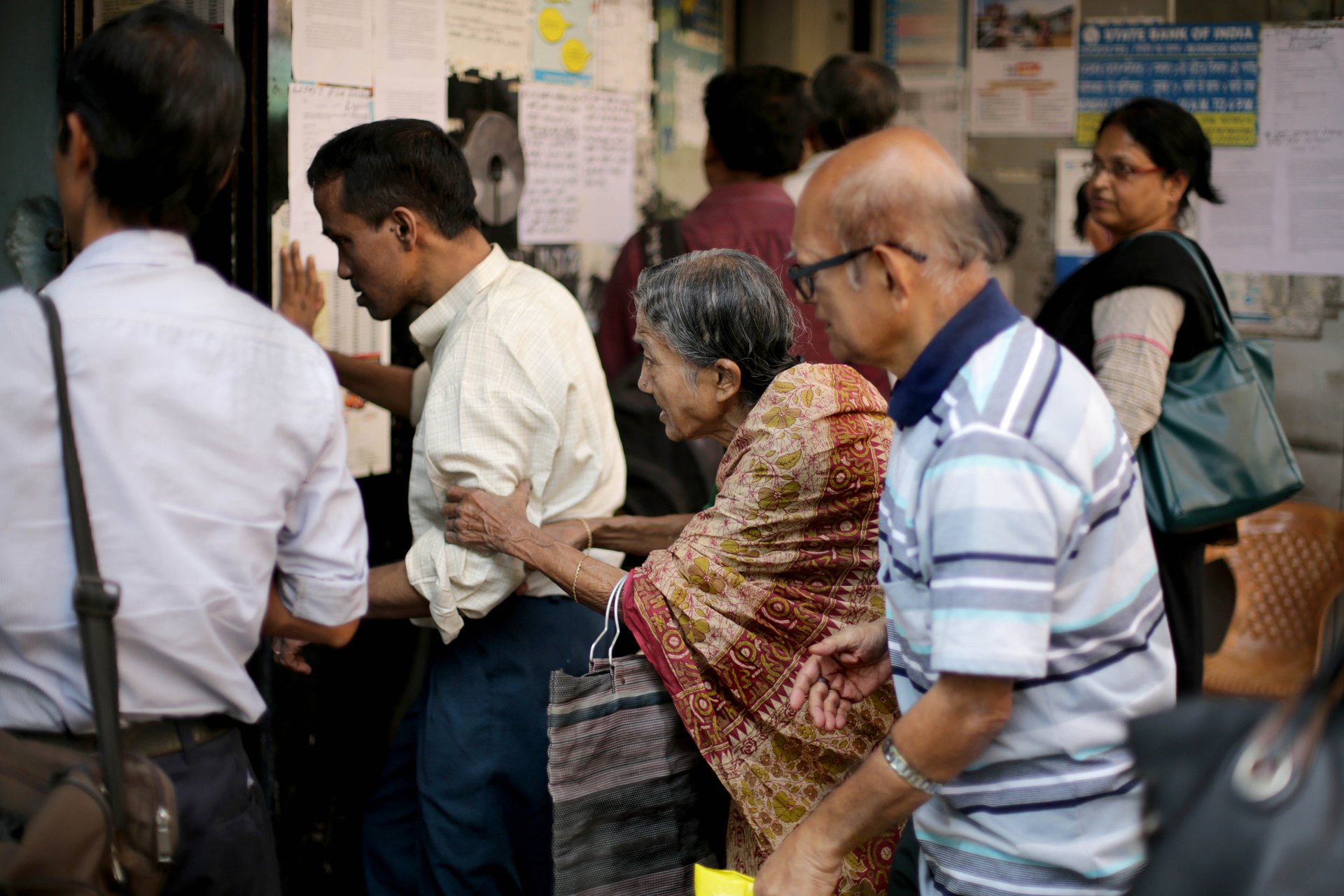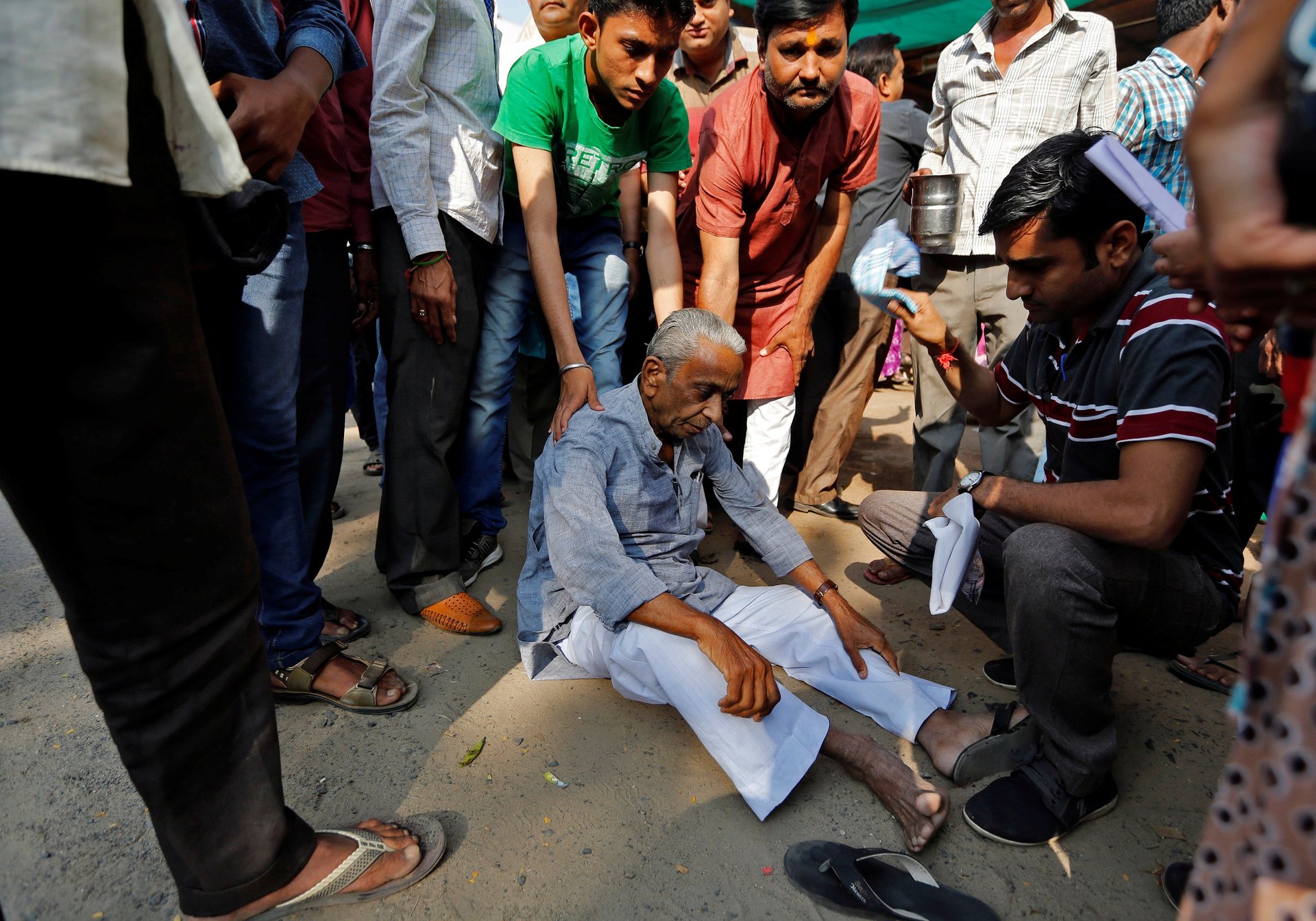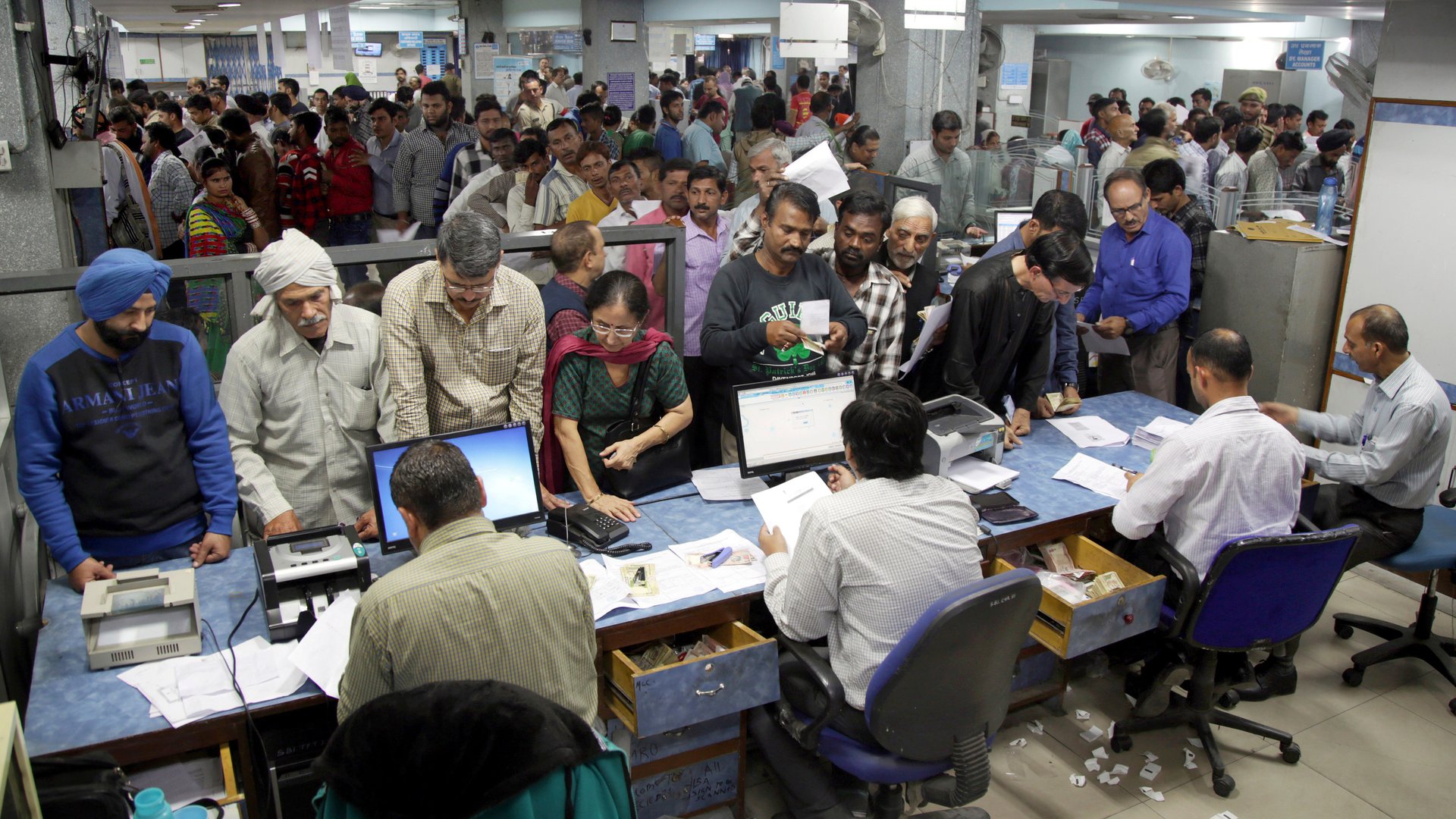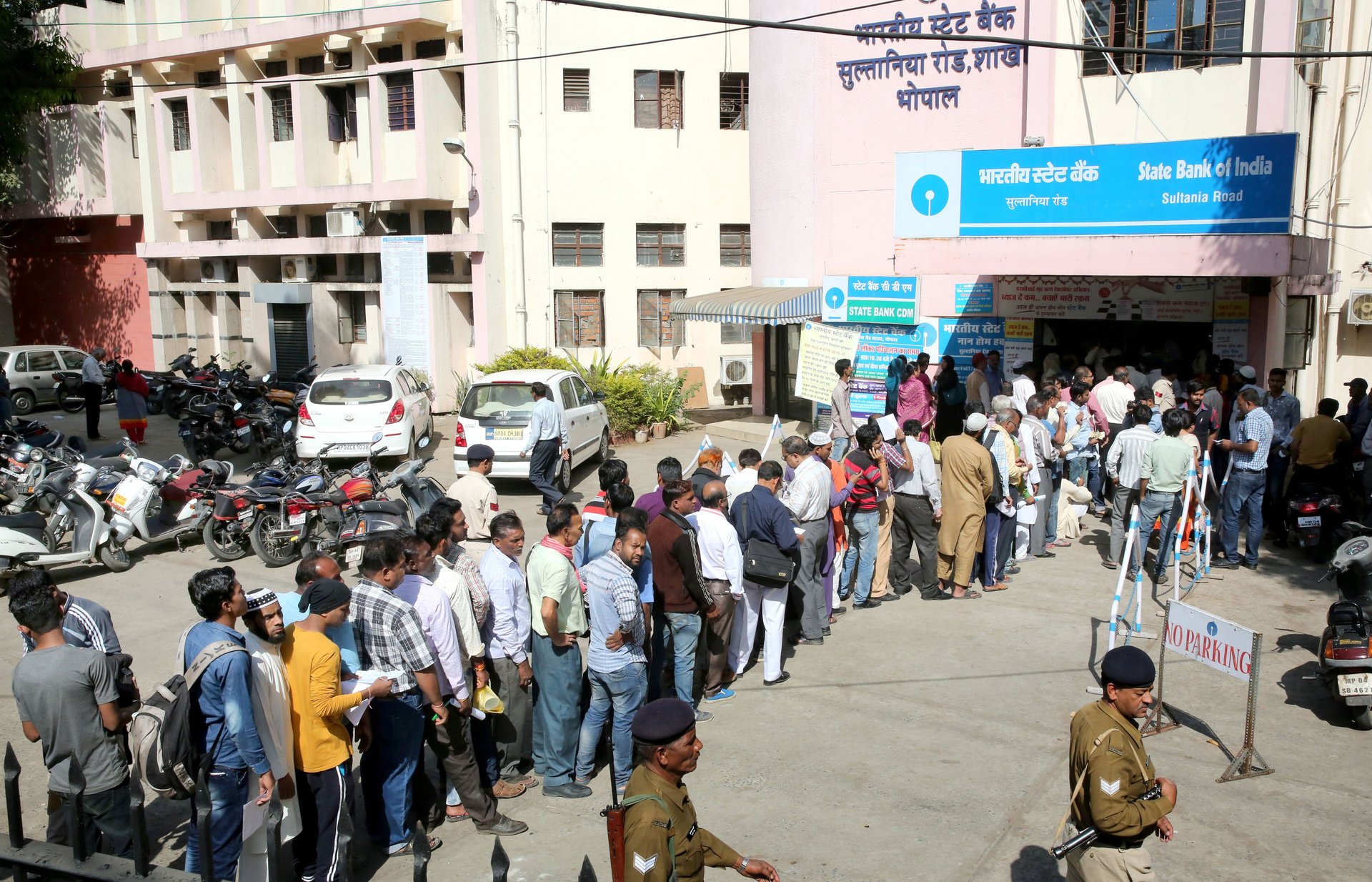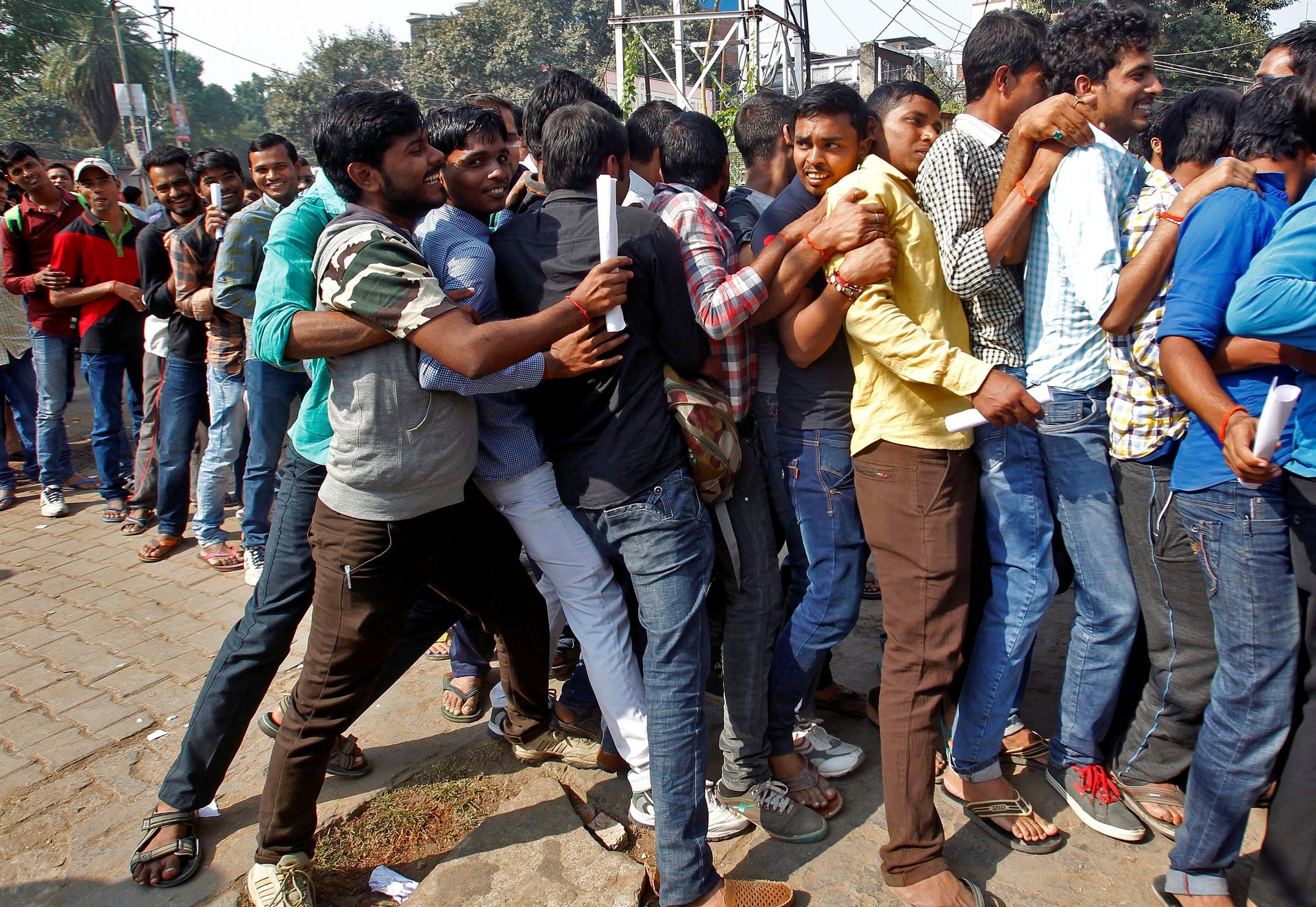In photos: Please wait India, you are in queue!
It’s been nine days since prime minister Narendra Modi announced his polarising decision to do away with India’s old Rs500 and Rs1,000 notes and most Indians have spent these days waiting in line.
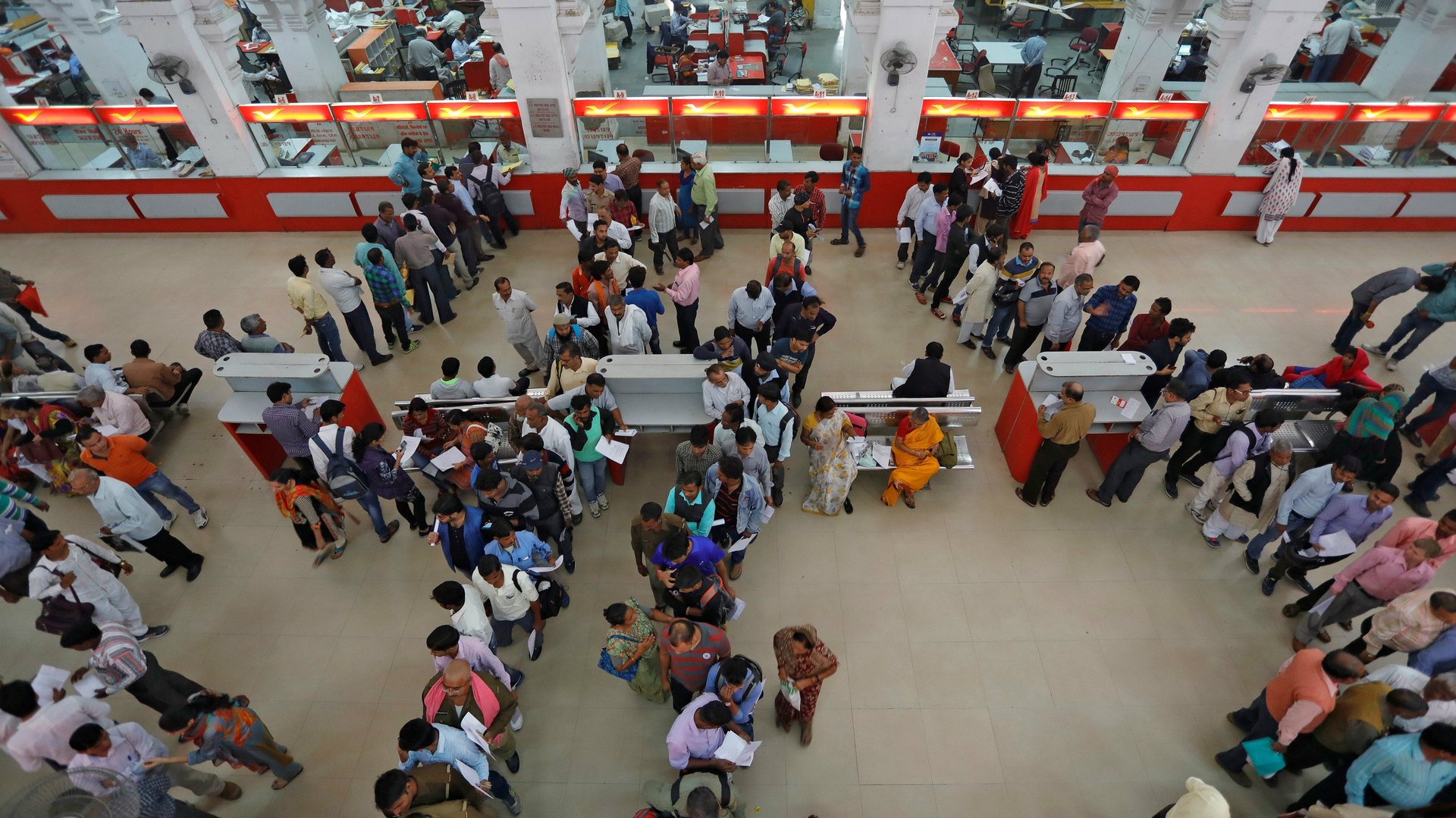

It’s been nine days since prime minister Narendra Modi announced his polarising decision to do away with India’s old Rs500 and Rs1,000 notes and most Indians have spent these days waiting in line.
Banks and ATMs were closed to the public for two days after Modi’s announcement on the night of Nov. 08. But as soon as they re-opened, millions of Indians queued up to exchange their now-worthless notes for the new Rs500 and Rs2,000 ones. However, the limited cash supply available—after all, the demonetised notes constituted 86% of India’s currency by value—meant that long delays were inevitable.
So people of all ages have spent hours in lines, without any guarantee that their bank or ATM wouldn’t run dry by the time they got to the tellers or teller machines. The stress and exhaustion of spending so much time standing has already claimed the lives of 47 people.
From New Delhi to Hyderabad, Ahmedabad to Kolkata, here are some photos of what the country had to bear:
